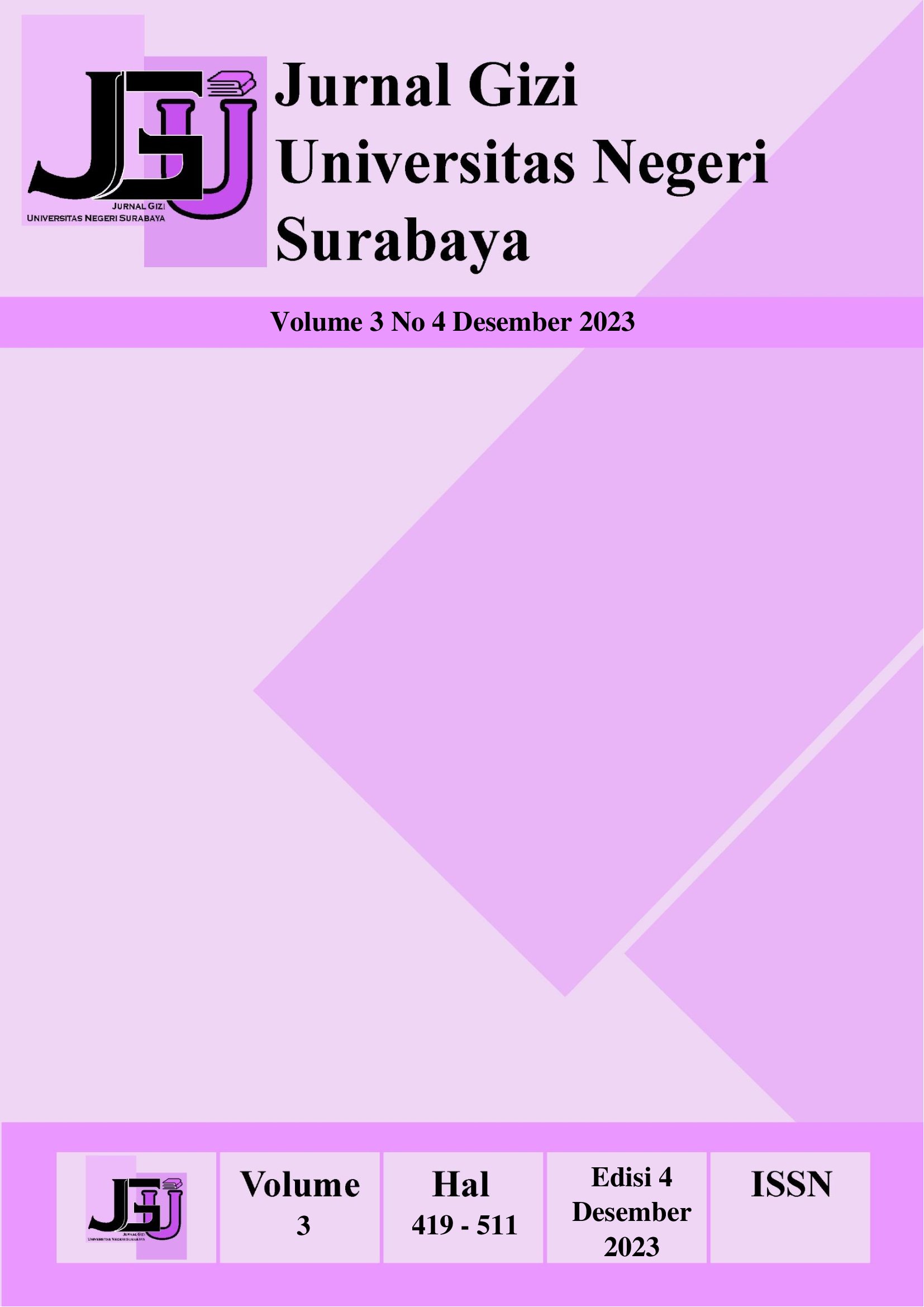THE RELATIONSHIP BETWEEN OMEGA-3 FATTY ACID, CALCIUM, MAGNESIUM, VITAMIN E INTAKE, PHYSICAL ACTIVITY AND NUTRITIONAL STATUS WITH THE DEGREE OF PRIMARY DYSMENORRHEA OF ISLAMIC AL MIZAN HIGH SCHOOL STUDENTS IN SURABAYA.
Keywords:
Omega-3, Calcium, Magnesium, BMI, Physical Activity, Primary DysmenorrheaAbstract
Primary dysmenorrhea is a medical term related to menstrual pain symptoms that occur right during menstruation and are not caused by abnormalities of the female reproductive organs. Healthy living behavior by consuming balanced nutritional intake, especially intake of omega-3, calcium, magnesium and vitamin E as well as adequate physical activity and maintaining good nutritional status can reduce the severity of dysmenorrhea in adolescent girls. This study aims to determine the relationship between intake of omega 3 fatty acids, calcium, magnesium, vitamin E, physical activity and nutritional status with the degree of primary dysmenorrhea of Al-Mizan Surabaya Islamic high school students. This research method is quantitative research with cross sectional design. The population taken was X and XI grade students of Al-Mizan Surabaya Islamic High School with 49 students selected by purposive sampling. Intake was obtained using the Semi Food Frequency Questionnare (SQ-FFQ) questionnaire, physical activity using the IPAQ-short form questionnaire, nutritional status was calculated in the IMT/U z-score index, and the degree of dysmenorrhea was obtained from the Numerical Rating Scale (NRS) questionnaire. Data were analyzed using the Spearman rank test. In conclusion, there was a correlation between omega-3 (p=0.00), calcium (p=0.00), magnesium (p=0.02), vitamin E (p=0.00), and physical activity (p=0.00) with the degree of primary dysmenorrhea of Al-Mizan Surabaya Islamic High School students. While nutritional status (p=0.95) has no relationship with the degree of primary dysmenorrhea of Islamic high school students Al-Mizan Surabaya.Downloads
Download data is not yet available.
Downloads
Published
2024-01-11
How to Cite
robbaniyah, adilah (2024) “THE RELATIONSHIP BETWEEN OMEGA-3 FATTY ACID, CALCIUM, MAGNESIUM, VITAMIN E INTAKE, PHYSICAL ACTIVITY AND NUTRITIONAL STATUS WITH THE DEGREE OF PRIMARY DYSMENORRHEA OF ISLAMIC AL MIZAN HIGH SCHOOL STUDENTS IN SURABAYA”., Jurnal Gizi dan Kesehatan Nusantara, 3(4), pp. 472–481. Available at: https://ejournal.unesa.ac.id/index.php/GIZIUNESA/article/view/57403 (Accessed: 13 December 2025).
Issue
Section
Artikel
 Abstract views: 325
,
Abstract views: 325
, PDF Downloads: 337
PDF Downloads: 337


